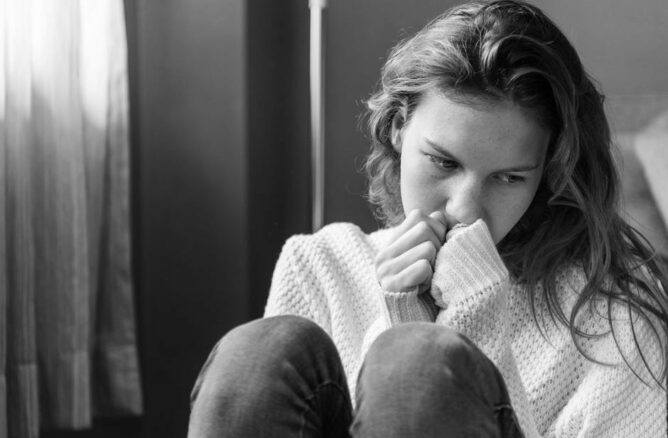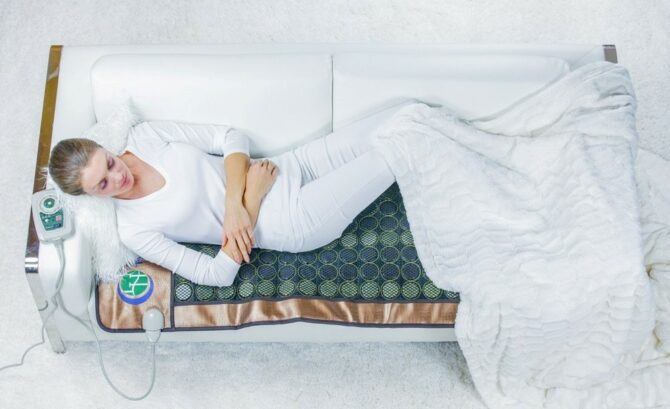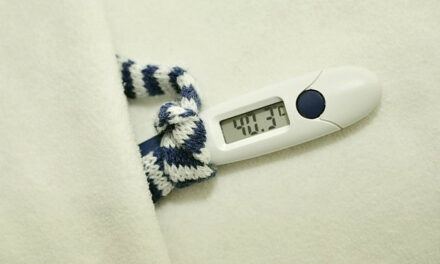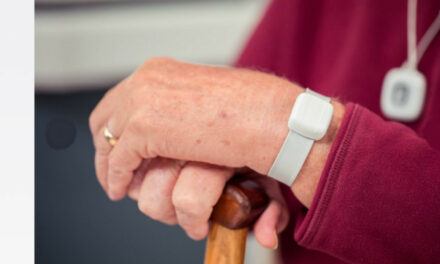When we talk about anxiety, one may see it as a phenomenon that is normal with life and with humans in particular, but let’s not forget that there is a difference between feeling anxious and exhibiting constant signs of anxiety or what we simply term as ‘anxiety attack’.
It is normal to feel anxious about certain things. Each day we come across certain things, or situations that could get us all worked up and anxious, but with someone that has anxiety, it is a lot more than just the worrying part.
Anxiety first starts with the constant thoughts, worrying and then other physical symptoms that seem to weigh you down almost seeming to lead you down the path of destruction.
Let’s have a look at, how common the anxiety among us women.
How Common is Anxiety in Women?
According to the American Psychiatric Association, anxiety disorder affects more than 25 million Americans. However, it is said that women are more likely to experience anxiety disorders than males. In a study of the American adults, data from the Collaborative Psychiatric Epidemiology Studies was used to determine the lifetime and 12-month male to female ratio of any anxiety disorder. That study showed the ratios to be 1:1.7 (lifetime) and 1: 1.79 (12-month), respectively. The study went ahead to establish the fact that anxiety disorders were associated with the greater illness burden in women than men, most notably, the European American women and the Hispanic women (to some extent). Crystal Lee, a psychologist and the owner of the LA Concierge Psychologist, said about anxiety that “anxiety is a normal part of life; however, when it seems to extend to all aspects of an individual’s life, not just a current situation that must have triggered it, then the individual must have an anxiety disorder.Types of Anxiety Disorder
Anxiety disorders can be classified under different types or categories: Generalized Anxiety Disorder This is a common type of anxiety disorder whereby the bearer exhibits excessive anxiety for no apparent reason. It usually lasts for a duration of 6 months or even longer. Phobia Phobia is the excessive fear of a particular object, activity or even situation. Separation anxiety This is the fear of being separated from home, family or place of comfort. Obsessive-compulsive disorder (OCD) It manifests as recurring thoughts that are very much likely to lead to certain abnormal behaviors. People with this disorder are usually troubled by obsessions and also suffer from uncontrollable compulsions. Panic disorder This sort of disorder comes with spontaneous and unexpected panic attacks that reoccur. It is usually accompanied by the fear of such reoccurring attacks even though they can be unpredictable. We have previously discussed the Difference Between Panic and Anxiety Attacks. Social anxiety People with social anxiety are usually scared of being judged in public or humiliation in social conditions or scenarios. They are self-conscious and so overwhelmingly anxious in every situation. They also tend to be extremely shy, especially when faced by the public. Post-traumatic stress disorder This is a type of severe anxiety that hits one after a traumatic event or situations. Research says that five out of ten women have a traumatic experience at one point or the other in their life and women tend to pass through different traumas than men.Why is Anxiety More Common in Females?
It would not be out of place for one to wonder why the females have to be dished out with a bigger dose of the anxiety disorder. Perhaps the great schemer behind it all just wasn’t in such a good mood, or it just was a mistake. Whichever case it is, the fact remains that millions of women deal with different anxiety issues every day much more than their male counterparts do. Now here are some valid reasons why women bear more of the anxiety burden. Female hormones On so many occasions, we mention ‘hormones’ and the impact they make in the life of both genders but most especially, the female gender. When compared to their male counterparts, it is clear that the females experience greater fluctuation in their hormone levels (those associated with anxiety symptoms inclusive). A good number of studies have shown that the onset of anxiety often accompanies periods of significant hormonal changes such as pregnancy and menopause. Women lifestyle When you think about it, the population of women living in poverty seems to be more than that of the males. Again, women are more likely to be subjected to all sorts of discrimination, sexual and physical abuse. These can induce anxiety. Learned behaviour Certain behaviors that are condoned in one gender are likely not to be condoned in another. Let’s take, for instance, in the case of anxiousness and shyness, and small boys tend to be more shamed or even punished for them. But little girls could be pardoned or even reinforced for such behaviours. It would not be out of place to say that girls are socially groomed to be more passive, keeping their stress and fears internalized. Thinking pattern or habit Women are much more likely to exhibit negative emotions, criticize themselves and think about their problems repeatedly.Symptoms of Anxiety in Women
How do you know if you have been hit with anxiety as a woman? It is not unusual to sometimes notice that it seems you are losing it. Sometimes, it could be just the hormones, at other times; it could be much more than that. What are the obvious signs that should point you towards anxiety? It doesn’t matter whether yours is a case of generalized anxiety disorder, panic attacks, social anxiety, post-traumatic stress disorder or even separation anxiety. Each presents with anxiety and do share similar or common symptoms. Here are some of them. 1. Excessive worrying This is a major symptom of generalized anxiety disorder. It is normal to get worried from time to time, but it becomes problematic when it creates an array of chronically anxious thoughts. You should know it has crossed the line when you worry too much about everyday things, and when such anxious thoughts are persistent over a long period (up to six months). According to the psychologist Sally Winston, co-director of the Anxiety and Stress Disorder Institute of Maryland, “with anxiety, there may not be an actual threat, but the victim has that constant feeling that a predator is hovering around.” 2. Excessive and irrational fears Sometimes anxiety is not generalized; it could be attached to a specific thing, place or situation, for example, heights, crowds or animals. If the fear is the sort that is extreme, disruptive, distressing, overwhelming or out of proportion when compared to the actual stimulant or risk then, it is a sign of phobia. Phobia is a type of anxiety disorder that usually has a crippling effect. Such fear is usually hard to overcome. 3. Heart pounding According to the U. S. National Institute of Mental Health (NIMH), the racing heartbeat is a classic sign of anxiety. This physical response is being triggered by the fight or flight response mechanism in the body. A continuous state of increased arousal whether triggered by excessive worry or fear would make the brain send signals for the release of increased cortisol and adrenaline which acts to produce an array of physical symptoms such as increased heartbeat. In the case of anxiety, the racing heartbeat produces what seems to be a never-ending vicious cycle. 4. Shortness of breath Oxygen is circulated throughout the body via the blood. Anxiety increases your body’s response to stress, which in turn increases the circulation of blood throughout your body. To meet up with this increase, your breathing might increase to supply you with more oxygen for circulation. Breathing too quickly (hyperventilation) does encourage some of the physical symptoms of anxiety as the oxygen/carbon dioxide level gets out of hand. Hence, certain exercise such as belly breathing is being encouraged to help slow down how quickly you breathe and ultimately increase your chances of getting the required oxygen. 5. Constant exhaustion A continuous feeling of tiredness is a common sign that indicates anxiety. That constant surge of adrenaline that runs through your blood when you are continuously battling with anxiety creates high and low situations that end up leaving your mind and body exhausted. Since insomnia (a sleep disorder) is also associated with anxiety, one could say it is also a leading cause of the constant exhaustion. Remember, as noted in the Why Do I Feel Tired All the Time? article, excessive tiredness with no obvious causes could be a sign of Chronic Fatigue Syndrome (or ME) too. 6. Sleeping problems Lots of physical and psychological health conditions are being linked to different sleep disorders. It could be trouble falling asleep, trouble staying asleep or feeling of restlessness and agitation. The racing thoughts and heartbeats that come with anxiety are not exactly helpful, encouraging for a great sleep. The same could be said about the elevated cortisol and adrenaline level. 7. Muscle tension This usually accompanies anxiety and could present with signs like balling of fists, clenching of the jaw and flexing of the muscles of the body. The muscle tension is part of the body’s stress response. Exercising regularly can help relax the tensed muscles and keep them under control. Remember, exercise can help not only with your anxiety levels but in the management of diabetes too. We previously covered the Best Exercise for Diabetes. 8. Sweating and chills People have a higher tendency to fall sick during periods of high anxiety. According to an article on Mayo Clinic, this is likely because the immune system doesn’t function effectively when the body’s fight or flight response is activated for an extended period. This leaves one more vulnerable to health conditions like the common cold. Even though sweating profusely makes anxiety worst, it is a common side effect of anxiety disorders. This could be linked to the activation of the sympathetic nervous system, which in turn influences the sweat glands located all over the body. 9. Problems with the gastrointestinal tract The onset of anxiety might first manifest in mind, but it sure extends to the gastrointestinal (GI) tract over time. Anxiety usually hits with physical symptoms like constipation, stomach pain and diarrhoea. It is also accompanied by gas, bloating and cramps. It makes it worse than the social and physical discomfort that accompanies digestive problems can increase the anxiety level of the individual. Other signs and symptoms of anxiety in women include below.- Dizziness
- Frequent urination
- Shaking or trembling
- Trouble concentrating










0 Comments